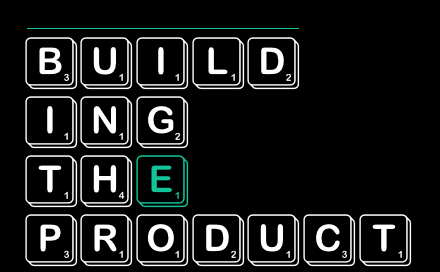Building the product
When I started Familiarize I had a very clear idea that I wanted to build a ‘product’ business, as distinct from a consultancy. I actually did both, with the consultancy buying me time to build the product and get ‘traction’ i.e. paying customers. This product idea is a vestige of my time at bp where we obsessed about scale. Millions of users, billions of dollars, Decacorns (Unicorn demonstrates low ambition).
And whilst today I have much less lofty ambitions in terms of cash generation, I remain committed to building a product because I want to do two things:
Helps as many businesses as possible.
Build something bigger than Adam Forbes.
Even via highly efficient Zoom calls, I can only help a limited number of businesses. Whereas, I could potentially help tens of thousands if I have a product that scales. Especially if that product is better than me.
But today, I have no product
Well, I have a very hacky, minimum viable product, that Harleen, my developer friend in India (find her on Fiverr, highly recommended) is building, using Airtable as a ‘backend’ and Stacker as the ‘front-end’.
It’s almost ready to share now, but I haven’t. Why? Because even though I know it will ‘fail’ and underwhelm, I want to protect it, by perfecting it.
I know LinkedIn Founder, Reid Hoffman’s quote by heart:
But equally he didn’t say launch a dog.
However, I know if I don’t take the plunge soon I’m liable to plough more money into something that my customers may not want. And build something that I like more than they do.
Exactly the bad business habit I want Familiarize to break.
Me as the product
So I am also mitigating the risk of building a useless product by becoming the product. Exactly what I said I didn’t want to be. Become a consultant and sell my time.
Last week I changed the offer on the Familiarize website to reflect what I’d learnt about my customer: They want something fast, a kickstarter, that gets them a ‘good enough’ understanding of their customer that they can validate and get to know. A monthly subscription seems to be a switch-off because “Month 2 feels too far off”.
So the product I built is a four-week programme, with a weekly Zoom session, focused on a specific outcome (pain point, profile, hypotheses, enrolment) – using the tool I’m building and some playbooks. For £199.
Feedback engine
And so I am able to quickly test this offer and pricing. Two founders said they thought it was both too high - and too low. More probing surfaced the real problem: they don’t understand what they’re getting and it doesn’t feel tangible. Compared with someone posting for them on Instagram each day, or producing a brand guideline or three articles for their website.
This has got me thinking how I could position my product in less abstract terms as tangible outcomes for my customer. From “understand your customer better” to “build your waitlist”, “competitor analysis”, “stakeholder influence map”.
I couldn’t have got these insights if I’d carried on talking about my product in abstract terms. We have to get our product – whatever it is – into our customers’ hands. And when we do, we need to listen carefully, probe why (multiple times) and wait for the wisdom.
Here’s a few tips for those of you building products, no matter if that’s software, hardware or a packaged-up version of you:
Customers don’t have the time or inclination to decipher your offer: make it as easy as possible for them to understand what benefits you can give them for what cost.
People buy people but they look for hard evidence to back up their decision. Translate your product into tangible outcomes your customer can evaluate.
Building a product blind is the biggest risk you’ll take. Place your baby in your customer’s hands as early as you can – you can always fill in the blanks or glide gracefully over the ugly bits.
You may not like the feedback. But if you hear it a few times, it’s hard to ignore. Make sure you really interrogate your customer to understand what doesn’t work for them. It’s time for the broken record “And why is that important?”. But also ask different people what they think – make yourself uncomfortable.
Each iteration of your product development cycle will (hopefully) improve your offer, increase traction and ultimately deliver return on your investment. Commit to Share, Learn, Improve – build a business around your customer, it’s the only way.
Putting our product into someone’s hands takes courage.
Just like we were never (really) our jobs, we aren’t our products.
While I’ve been writing this, I’ve had an email from one of the Founders I’ve been working with. To tell me the product I carefully packaged up just for him has bombed. It’s deflating of course.
But his offer to talk me through why it’s bombed is absolute gold.







